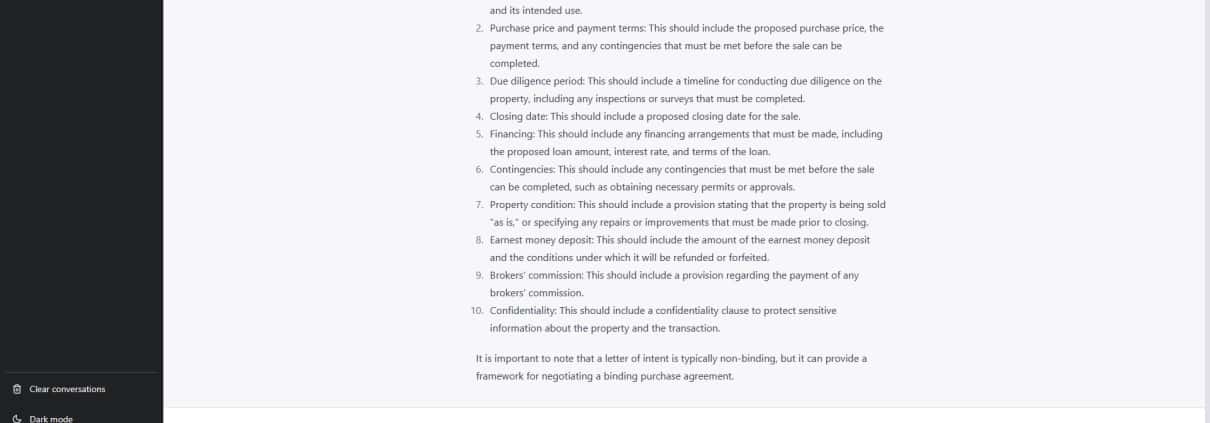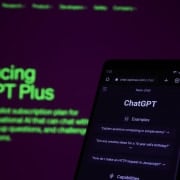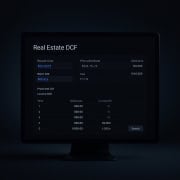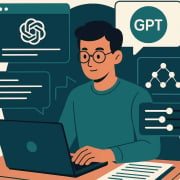Using OpenAI’s ChatGPT to Quickly Draft Real Estate Business Terms
Another blog post in a series on how to use ChatGPT in commercial real estate. As a real estate professional, we’re often tasked with drafting and modifying non-binding business documents such as letters of intent (LOI) and memorandums of understand (MOU). These documents spell out business terms, that attorneys then formalize in binding JV agreements, purchase and sale agreements, loan agreements, and other documents.
In this tutorial, I show you how you might use OpenAI’s GPT to create draft business terms for a letter of intent or memorandum of understanding.

The output created from ChatGPT based on the prompt: “provide a list of potential clauses in a letter of intent for the purchase of commercial real estate.”
What is GPT, ChatGPT, and OpenAI?
First, some definitions to help you as you read and watch. If you’ve seen our other content on the subject, this will be review. I used ChatGPT to write the following definition (try it yourself!), with the prompt: What is GPT and its relationship to ChatGPT and OpenAI?
GPT is a language model developed by OpenAI. It is one of the largest and most powerful language models ever created, with 175 billion parameters. Like ChatGPT, GPT is designed to generate human-like responses to text-based prompts, and is trained on a massive dataset of text.
ChatGPT is a variant of GPT that has been fine-tuned for conversational interactions. It uses a smaller set of parameters (fewer than GPT) and has been optimized to generate more conversational responses, making it better suited for use in chatbot applications and other conversational AI systems.
GPT and ChatGPT are both products of OpenAI’s research efforts, and both are designed to showcase the power and potential of advanced language models. They are examples of how artificial intelligence can be used to create more sophisticated and effective conversational AI systems that can be used in a variety of applications, from customer service chatbots to personal assistants and more.
Drafting Business Term Documents – Then and Now
Before GPT, the process of drafting letters of intent (or memorandums of understanding) for things like purchases, leases, or joint ventures was a manual process. The real estate professional would generally grab a template LOI, or an LOI from a previous deal, and manually edit the terms based on their own understanding or that of others.
When additions or modifications needed to be made, the real estate professional would go into their library of past LOIs for inspiration or seek guidance from another member of the team to create language.
While not a gamechanger, the advent of artificial language models like GPT has helped make this process easier, faster, and more complete.
For instance, now if you need to add or modify a clause in your LOI, simply ask the AI via a prompt for possible language. The engine then produces language for you. You then modify that language to suit your needs.
The better the prompt, the better the result. In the video that follows, you’ll see this in action.
Using GPT in Commercial Real Estate – Quickly Draft Business Terms
I continue to explore other use cases for this technology in commercial real estate. One such other use case is to leverage the ChatGPT tool to quickly draft language for negotiation documents. So, for instance new clauses or modifications to a letter of intent (LOI), memorandum of understanding (MOU), term sheet, pre-approval letter, etc. In this video, I show you how I’ve begun using GPT to speed the drafting of these non-binding business/negotiation documents.
Frequently Asked Questions about Using ChatGPT to Draft Real Estate Business Terms
What is the purpose of using ChatGPT in commercial real estate?
ChatGPT can be used to quickly draft and modify non-binding business documents such as letters of intent (LOIs) and memorandums of understanding (MOUs). It helps streamline the early stages of negotiation by generating draft language for review.
How has drafting business terms changed with GPT?
Before GPT, drafting LOIs or MOUs was a manual process based on templates or past deals. Now, professionals can use GPT to “ask the AI via a prompt for possible language” and quickly generate clauses to modify and insert.
What types of documents can ChatGPT help draft in real estate?
ChatGPT can assist with drafting LOIs, MOUs, term sheets, pre-approval letters, and other negotiation-focused documents. These are generally non-binding documents used to outline key business terms before legal formalization.
Is ChatGPT replacing attorneys in drafting legal documents?
No, ChatGPT is a tool for drafting business terms, not formal legal contracts. “Attorneys then formalize” the language created in negotiation documents into binding legal agreements such as joint venture agreements or purchase and sale contracts.
What’s the benefit of using GPT for real estate professionals?
GPT speeds up the creation of customized, professional draft language. It makes the process “easier, faster, and more complete,” especially when adding new clauses or modifying existing terms in negotiation documents.
How do you get the best results from ChatGPT when drafting terms?
“The better the prompt, the better the result.” Clear, specific prompts lead to more relevant and usable draft language. Users should refine their requests to match the intended purpose of the clause or document.
What is the difference between GPT and ChatGPT?
GPT is a large language model developed by OpenAI, while ChatGPT is a fine-tuned variant optimized for conversational interactions. Both are AI tools developed by OpenAI to generate human-like responses to text prompts.
Is using ChatGPT a gamechanger in commercial real estate?
While not a full “gamechanger,” GPT has made drafting non-binding documents “easier, faster, and more complete,” improving efficiency for real estate professionals during early deal structuring.









